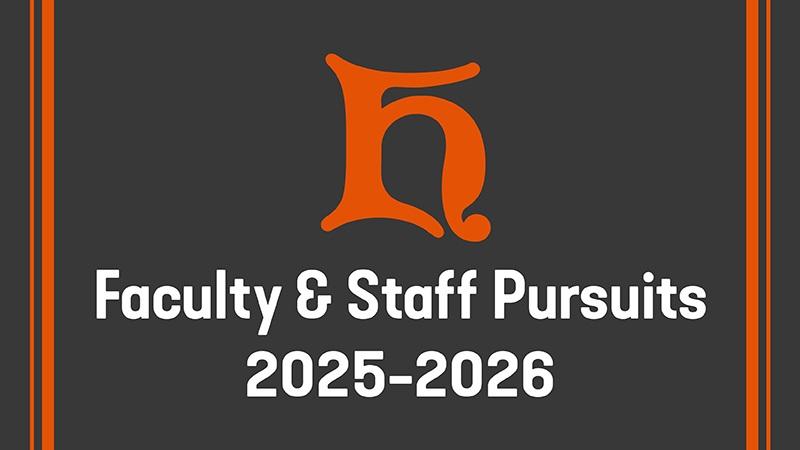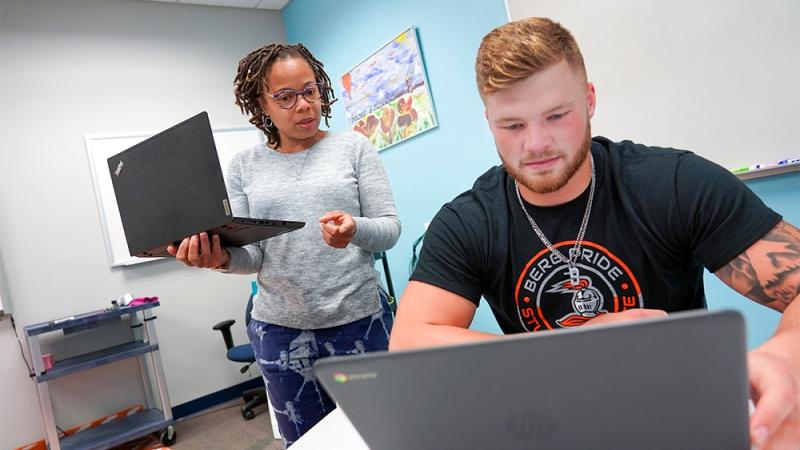Travel and artwork and chem -- oh my!
Over the summer, students who took Chemistry 108 - The Science of Art in the spring semester “had the opportunity to see how their classroom instruction connects to the real world.”
The Science of Art class combines two worlds, showing students the chemical requirements of evaluating and conserving art. The course covers art history, chemistry and art conservation.
When the class is over, students are able to travel to the Netherlands with the class. In the Netherlands, students visited the Stedelijk Museum and toured conservation studios, seeing the pieces that they had discussed in class.
Dr. Nate Beres, who teaches the class, loves seeing students engage with the art, history and chemistry – and fully understand its importance after the course has ended. “We have the opportunity to see conservation firsthand as we tour conservation studios. Students were able to meet conservators from the Stedelijk Museum to learn about sculpture and painting conservation,” Nate explained. “Through these conversations, students are able to connect the lessons from campus to a real world application. It is a unique experience for Heidelberg students to see how the liberal arts interconnect to be used in the preservation and conservation of artwork.”
Additionally, students gave presentations about landmarks or pieces of art from the Netherlands, and got to tour famous historic locations. On this year’s trip, students visited the Portuguese Synagogue, Jewish Historical Museum and the Anne Frank House.
Of course, for any professor, this trip is an amazing practice of theory, application and appreciation. However, the students love it just as much.
“Traveling to the Netherlands with the CHM 108 class was a dream come true. It was so much fun, and I learned a lot more than I expected to,” Jeanna Fullom shared. Jeanna just graduated with her bachelor’s degree in Biology, and is coming back to the Berg this fall to pursue her MBA. Jeanna was thrilled to visit numerous art museums on the trip, her favorite being the Vincent van Gogh museum. “He has always been one of my favorite artists, so to see his paintings in person was unreal. Not only that, but some of the art works we had discussed in class were there, and being able to see the details we talked about was quite marvelous.” Jeanna’s favorite painting, van Gogh’s “Sunflowers” was a research topic for her in the Chemistry of Art class.
Seeing art is lovely, but students of the Chemistry of Art class also got to see how art is conserved. Through a conservation tour at the Stedelijk Museum, students witnessed the techniques they researched performed first hand. “Watching these people do what we learned about all semester was riveting,” Jeanna explained. “There is so much more than you realize that goes into restoring an old painting, and seeing that first hand was something I will never forget.”
With any travel abroad at the collegiate level, there were opportunities to relax and enjoy the culture. Jeanna, in particular, loved the city of Delft. “It was a cute little town that I could explore for hours. We had lunch at a cafe while we were there, and not only was it some of the best food I’d ever had, but the people there were incredibly friendly.” Delft, interestingly enough, is considered the birthplace of microbiology. And like microbiology, although little, Delft is full of interesting people and historical influence. The people of Delft were happy to share their lifestyle with Jeanna and the ’Berg crew. “We chatted with some locals sitting next to us,” she detailed, “who told us stories of the town, and all the sights we had to see while we were there. I loved the interactions we were able to have with all these people. They made me feel right at home in their little city.”
With so much to see and do, the students of CHM 108 learned much more than the chemistry of art. Through the course and their travel to the Netherlands, this unforgettable experience allowed these students to fully appreciate the interconnected world we live in.




